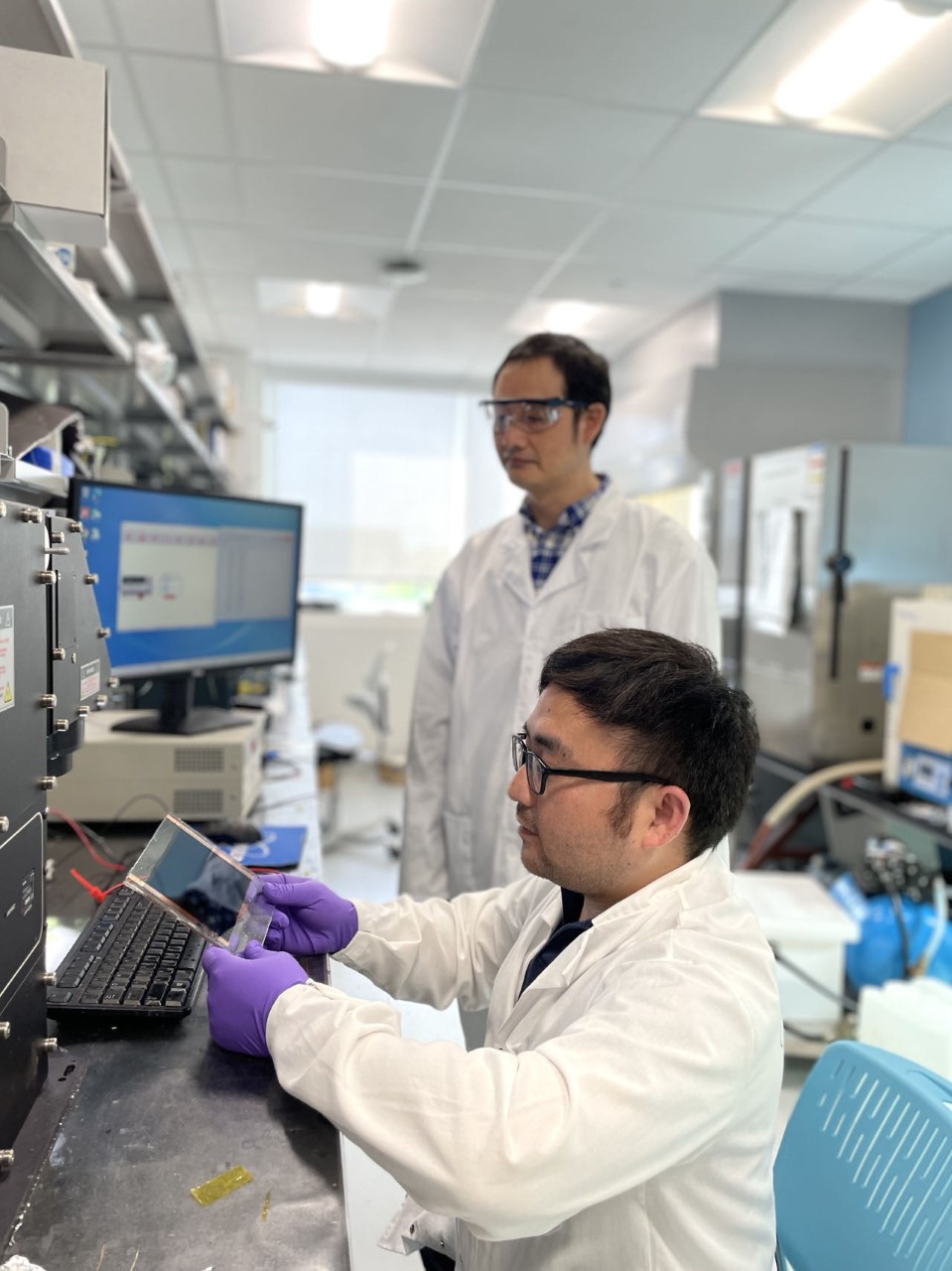New collaborative research may create more accessible, efficient solar energy applications
Did you know that solar energy is expected to account for more than half of the new electricity generating capacity in 2023? As technologies advance and in-depth research is executed, solar energy is becoming more accessible across applications.
In innovative new research, distinguished professor Jinsong Huang in the department of applied physical sciences is making strides to improve the efficiency of solar energy.
Perovskite solar cells have recently become one of the most promising avenues in the future of solar energy. These unique cells have a structure called p-i-n, which converts sunlight into usable electricity by generating an electric current. However, the materials that are used to interface with the bottom layer of solar cells can reduce the efficiency, stability, and overall performance of the solar cell.
Published in Science, the research by Huang and his team works to remedy this issue. As a solution, the team added molecules called lead chelation molecules (LCMs) into the hole transport layer (HTL) which strongly interact with lead in perovskites. According to Huang, this interaction improved the performance of the solar cells by boosting stability while reducing defects. Interestingly, he adds that lead chelation molecules are also used for medication to treat blood toxicity, demonstrating broad benefit across scientific disciplines.
The team then worked to stabilize the interface between the HTL and perovskite layers. Establishing better connections in this interface means that the cellular layers are less likely to have weak points or defects so that the solar cell can function with more stability. Importantly, this enhancement allows the solar cell to work more efficiently, converting more sunlight into usable electricity.
Specifically, the team fabricated perovskite “minimodules” to examine the uniformity of the modification to the HTL. Minimodules with an aperture area of 26.9 square centimeters have a power conversion efficiency of 21.8% (stabilized at 21.1%) certified by NREL. This corresponds to a minimal small cell efficiency of 24.6% (stabilized at 24.1%) throughout the module area, demonstrating very good uniformity. Importantly, the device passed the damp-heat test, demonstrating its ability to withstand high temperatures and humidity. Small-area cells and large area minimodules with LCMs in the HTL had a light-soaking stability of 3010 and 2130 hours, respectively, at an efficiency loss of 10% from initial value under 1-Sun illumination at open-circuit voltage condition.
Huang’s research may have an important impact on sustainable and renewable energy applications as scientists continuously seek to better address our world’s energy needs. By better understanding how to make perovskite solar modules more efficient, stable, and cost-effective, scientists may be able to harness solar energy for implementation on a broader scale.

Jinsong Huang (standing); first author, Chengbin Fei (seated)

